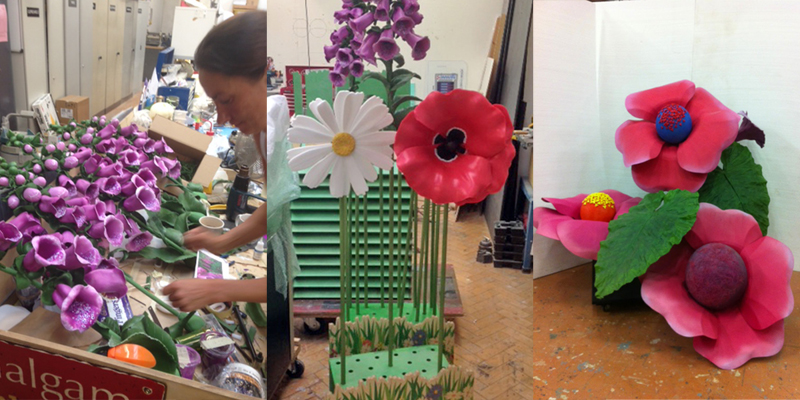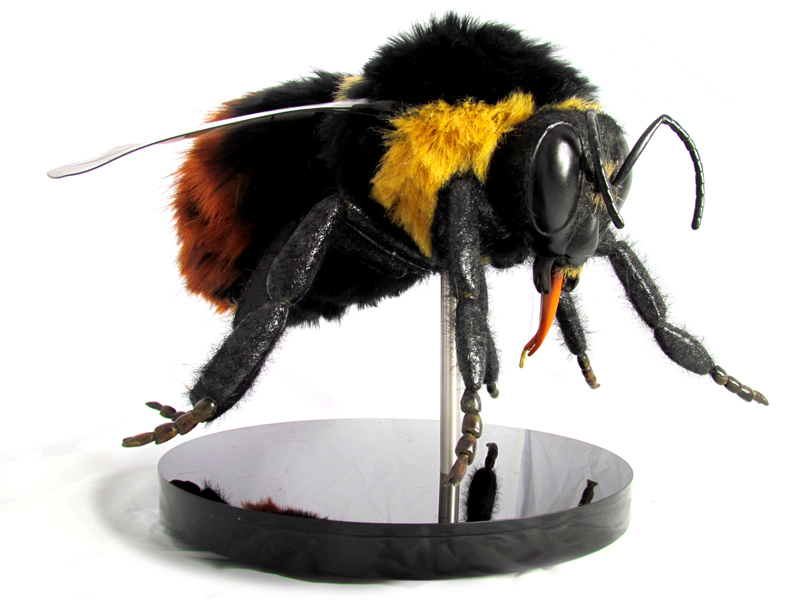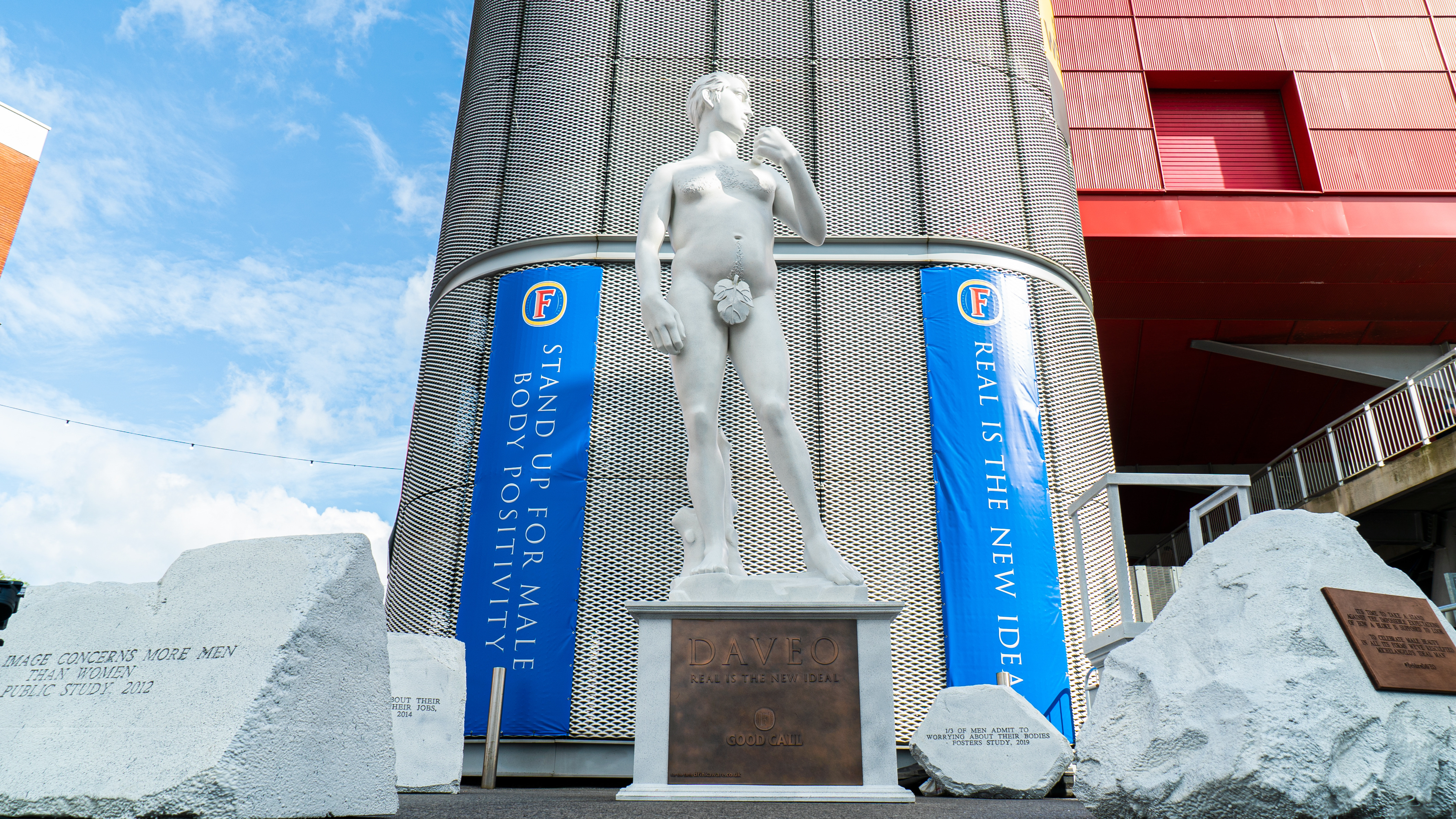How Interactive Props help bring drama into a story

This month we look at how interactive props make such a difference when you’re running an educational workshop.
Every business, charity or organisation has a story to tell, which they may share in visitor centres or through their open events and professional workshops. The greatest challenge is similar for all: making the story resonate with the audience. For children especially, they love drama. We create our memories by forming stories, so the ones we can best recall are the ones that were dramatic.
When we met The Bumblebee Conservation Trust to talk about their plans for a bumblebee science roadshow, it was great to see them planning interactive props to support the educational goals. Education officer, Andy Benson, had developed a clear script to bring the workshops alive. Andy’s initial concept was to create a theatrical stage set, presenting the children with a colourful, layered arena for storytelling during the sessions.
Linked to the curriculum, the goal is to engage students in hands-on workshops, exploring the habitats, pollination and lifecycle of the bees. The Bumblebee Education Experience (B.E.E.) will be enjoyed by pupils in over forty secondary schools around Derbyshire and The Peak District over the academic year.

To help The Bumblebee Conservation Trust develop their ‘buzzing’ education programme, our design challenge was to take into consideration all the practical requirements, like the speed of setting up and transportation, but also then add drama into this little theatrical bee world.
We built a series of large-scale models of the bumblebees and their young, with interactive props such as a pollen analysis activity and display graphics to support the learning. Our aim was to create at least one element of visual drama in each layer of the set, which we achieved in three parts:
‘The meadow’

We designed and built several units to convey the encroachment of industrial, domestic and large-scale farming development on the wildflower The dramatic concept was to gradually flip sections of the meadow to reveal the changes. This flip can be done with a bang and a flourish, finally showing a tiny percentage of the wildflower meadow that remains as the bumblebees’ habitat.
‘The bees’ nests’

The concept here is to reveal the large-scale nest structures with dramatic effect from behind the meadow. This sets the scene for the story of how the bees rely on the meadows. The children see the distinctive nests and large soft versions of a queen bee and her workers; even more engaging, there are soft grubs in the nest compartments. Giant insects always catch people’s attention. We made one highly detailed replica of the Bilberry Bumblebee (Bombus monticola) showing its wings, fur and features to support the workshop leader explaining the difference in species of bees.
‘The flowers’

To create height and a backdrop to the set, we made four sets of realistic giant flowers: daisies, poppies and foxgloves. Creating the drama here relies on building tension when the lights are lowered, hushing the pupils into silence. Then the storyteller can reveal how the flowers belong in the bees world, having fluorescent patterns to attract bees to their pollen, which is only evident in the dark, under UV light. We created tabletop blackout booths for the children to experience the UV effect on the flowers at close quarters.
Feasibility, budget and time are usually the deciding factors for how we build interactive props. More practical considerations at the design phase include:
1. Portability
For a touring workshop, interactive props have to fit in a car or small van; they must be easy to carry through standard size doorways or fit into a lift.
2. Scale and weight
Everyone wants to create a wow-factor with their story. But overall size and weight are critical factors – especially when moving from location to location. When designing interactive props, we must find a balance between creating an impact with large scale designs and meeting your needs. For multiple items, we can make moulds (as done for Gromit Unleashed) which has an impact on overall cost. That’s why we explore all the options during the initial design phase.
3. Strength and durability
When running a series of workshops or installing a visitor centre, we need to know how long the interactive props will be in use – to assess how robust they need to be. This helps us review which materials to use. Touring forty schools in the next two academic years and being handled by pupils meant that strength was paramount for the bumblebee displays. The more delicate, lifelike replica model of the Bilberry Bumblebee will only be used by the workshop leaders.

4. Fit for purpose
When building interactive props, we plan how they’ll function and what instructions the audience or workshop leader will need. This includes a risk assessment to check whether anyone could hurt themselves and how the props will be handled. Our primary aim is to make sure they are fit for purpose, for example, with the blackout booths being dark enough for the UV analysis activities.

5. Set-up and environment
Indoor workshops held in school halls meant we could consider a wider selection of materials. Outdoor props often end up being stainless steel, wood that weathers naturally or they need specialist finishing paints and coating to protect them. From the outset, we knew the timings and the number of people on the team for the school workshops – giving us a clear brief. Set-up time is limited, which helped decide the number of units for group activities. For a permanent visitor centre or museum display, we can make different design decisions.
We are rather proud of the results – and the Bumblebee Conservation Trust has made a film showing the whole package in use – so we thought we would include it here.
We think this clearly demonstrates how our experience in making so many different physical props and models comes into its own. Call us if you need some help to solve these challenges and create drama for your story.



